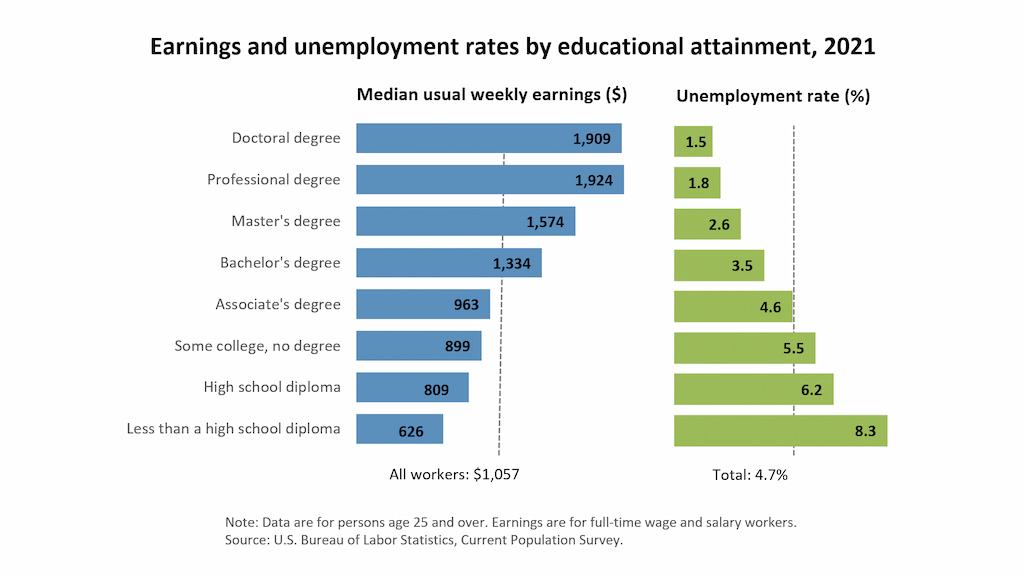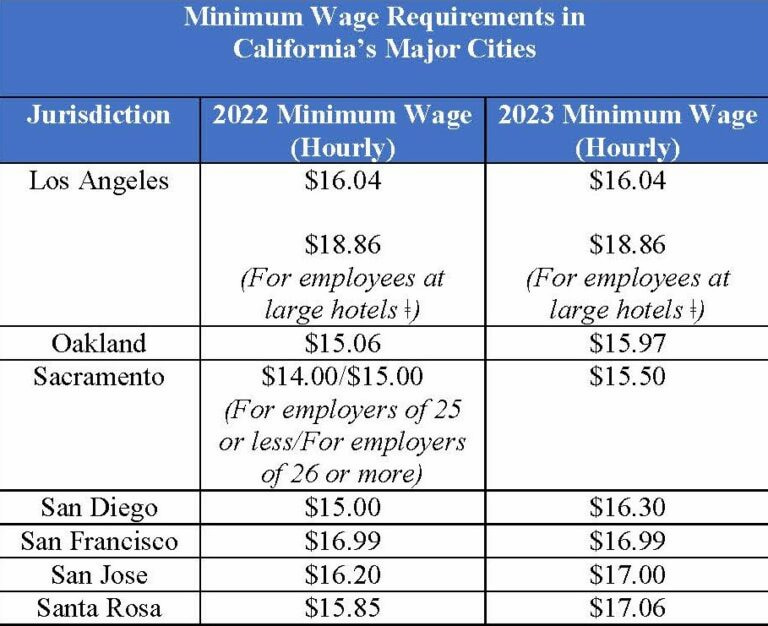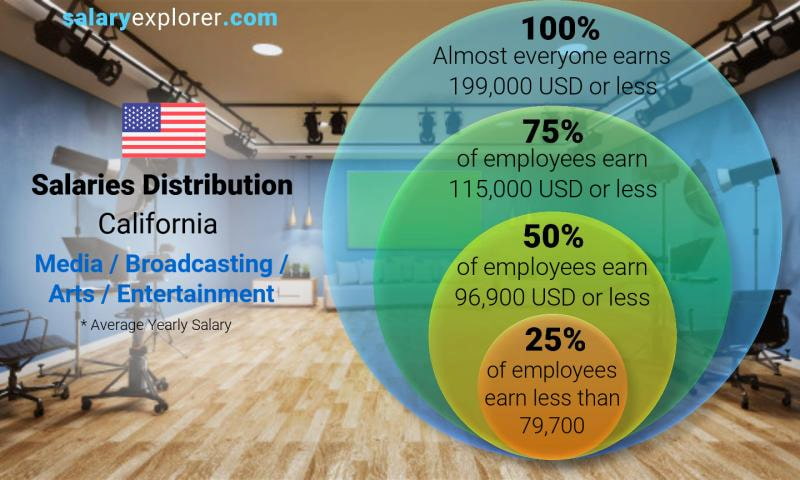With its bustling cities, thriving tech sector, and robust job market, California offers many opportunities for professionals across various fields. Whether you’re a seasoned executive, an aspiring entrepreneur, or a fresh graduate, comprehending the average salary trends in the Golden State can prove instrumental in making career choices, negotiating salaries, or even deciding on a location to settle.
We’ve already covered average salaries in Mexico and discussed in detail what factors influence earnings in Mexico. By understanding the average salary landscape in California, we can better grasp the economic dynamics and trends underpinning this diverse state. So, join us on this enlightening journey as we uncover the intricacies of the average salary in California and discover how it shapes the lives of millions of individuals within its borders.
Understanding the Average Salary in California

The average salary is a benchmark to gauge the earnings of individuals within a specific region. It represents the total income earned by all workers in a particular sector or geographic area divided by the number of workers. Understanding the average salary is crucial as it provides insights into the overall earning potential and economic health of a region.
Use a time tracker like Everhour to track the progress of your salaried employers and freelancers to pay them for every minute!
Everhour is the top choice for small businesses and small to mid-size teams of 5 to 50 members, including professionals like software developers, marketers, designers, consultants, lawyers, you name it!
Seamlessly integrating with popular project management tools like Asana, Trello, and Jira, its user-friendly interface and customizable reports make it the ultimate time tracking solution for small and mid-size teams.
With dedicated support ensuring you receive timely assistance, our team is here to help you promptly and with a smile!
Factors influencing average salaries in California
The average salary in California is shaped by many factors that reflect the state’s unique economic landscape and diverse industries. Understanding these factors can provide valuable insights into the variations in earning potential across different job sectors and regions within the state.
🏭 Industry and job sector: The dominance of high-paying sectors like Silicon Valley’s tech industry and the entertainment industry in Los Angeles contributes significantly to the overall average salary in California. The demand for specialized skills and the presence of major companies within these sectors often leads to higher wages.
🏫 Education and skill levels: Education and skill levels play a crucial role in determining average salaries. California is home to prestigious universities and colleges that produce a highly skilled workforce. Occupations requiring advanced degrees or specialized training, such as doctors, engineers, and software developers, often command higher salaries compared to jobs that require lower skill levels.

💲 Cost of living: The cost of living in California is generally higher than the national average. Factors such as housing expenses, transportation costs, and healthcare can significantly impact salary levels. To attract and retain talent in high-cost areas, employers often offer higher salaries to compensate for the increased living expenses.
💱 Economic climate: The overall economic health of California, as well as the nation as a whole, can influence average salaries. During economic growth and prosperity periods, businesses may have more resources available to offer competitive wages. Conversely, during economic downturns, job market fluctuations, and recessions, average salaries may be affected as companies adjust their compensation plans.
❔ Market demand and supply: The demand and supply dynamics within specific job sectors can impact average salaries. Industries experiencing a shortage of qualified professionals or high demand for specific skills may see increased competition among employers, leading to higher wages. Conversely, oversaturated job markets or industries with a surplus of qualified candidates may result in lower salary levels.
Comparison of the average salary in California with the national average
Comparing the average salary in California to the national average allows us to gauge the state’s economic standing and the relative earning potential of its residents. California’s unique characteristics, such as its high concentration of high-paying industries and expensive living costs, often result in average salaries that surpass the national average. However, it’s important to consider the regional disparities within California itself, as different areas may exhibit varying salary levels.
| The average salary in California | National average salary | |
|---|---|---|
| All Industries | $68,180 | $56,310 |
| Technology | $92,500 | $82,860 |
| Healthcare | $76,940 | $67,080 |
| Finance | $84,320 | $72,500 |
| Education | $59,720 | $52,380 |
| Manufacturing | $61,480 | $58,980 |
| Retail | $35,860 | $32,410 |
| Hospitality | $29,620 | $27,920 |
| Construction | $59,240 | $51,820 |
| Professional Services | $74,200 | $63,780 |
Average annual salary increase in California
Understanding the average annual salary increase in California provides valuable insights into the pace of income growth and the overall economic climate within the state. This information is crucial for employees and employers to assess salary trends, make informed compensation decisions, and gauge the competitiveness of wages.
👛 Economic factors: The state’s economic performance, including factors such as GDP growth, unemployment rates, and inflation, has a significant impact on average annual salary increases. According to the latest data from the California Employment Development Department, the state’s GDP growth rate was 3.9% in the previous fiscal year, contributing to an average annual salary increase of 3.5% across various industries.
📉 Industry-specific trends: For instance, the technology sector, a significant driver of the state’s economy, witnessed an average annual salary increase of 4.8% last year, outpacing the overall average. Conversely, industries such as hospitality and retail experienced relatively lower salary growth at around 2% due to various factors including competition, market saturation, and labor cost constraints.
🗺️ Regional disparities: Salary growth can also vary across different regions within California. In metropolitan areas like San Francisco and Silicon Valley, which are hubs for the technology and finance industries, the average annual salary increase was around 5% last year. In contrast, rural regions and economically less-developed areas saw average annual salary increases ranging from 2% to 3%.
❗ Skill demand and supply: The demand and supply dynamics of specific skills and occupations influence salary growth rates. In-demand skills, such as data science, artificial intelligence, and cybersecurity, experienced average annual salary increases of 6% or more, reflecting the scarcity of talent in these fields. Occupations with an oversupply of qualified candidates witnessed more modest average annual salary increases of around 2% to 3%.
📰 Company performance and policies: Successful companies with solid revenue growth and healthy profit margins often provide more significant salary raises to their employees. For example, technology giants based in California reported average annual salary increases of 7% to 8% in the previous year, while smaller companies in less lucrative sectors offered average annual salary increases ranging from 3% to 5%.
| Industry | Average gross annual salary increase |
| Technology | 5.2% |
| Finance | 4.8% |
| Healthcare | 4.5% |
| Entertainment | 4.2% |
| Engineering | 4.0% |
| Professional Services | 3.8% |
| Manufacturing | 3.5% |
| Education | 3.2% |
| Retail | 2.9% |
| Hospitality | 2.6% |
| Construction | 2.4% |
| Transportation and Warehousing | 2.1% |
| Agriculture | 1.8% |
| Other Services | 1.5% |
Average daily wage in California
The daily minimum wage in California is a crucial aspect of ensuring fair compensation for workers across the state. The California Labor Commissioner’s Office and the official website of the California Department of Industrial Relations provide valuable information on the current minimum wage rates.
Minimum wage rates: As of the latest available information from the California Labor Commissioner’s Office or the official website of the California Department of Industrial Relations, the minimum wage rates in California are as follows:
- For employers with 25 or fewer employees: $14.00 per hour
- For employers with 26 or more employees: $15.00 per hour

Annual adjustments: The minimum wage rates in California are subject to annual adjustments based on legislative mandates. The California Labor Commissioner’s Office or the California Department of Industrial Relations official website typically announces any changes to the minimum wage rates well in advance to allow employers and employees to prepare for the adjustments.
Highest Paying Jobs in California
California is widely recognized as a hub for high-paying job opportunities, attracting professionals from various fields seeking rewarding careers. The state’s vibrant economy, entrepreneurial spirit, and concentration of leading industries contribute to the presence of lucrative job sectors. Let’s explore some key aspects of the high-paying job sectors in California.
1️⃣ Technology sector: California’s technology sector, centered in Silicon Valley and other tech hubs, offers numerous high-paying jobs. Companies like Google, Apple, Facebook, and other tech giants have established their headquarters or major operations in the state. This sector encompasses software development, data science, artificial intelligence, cybersecurity, and more.
2️⃣ Finance sector: California’s finance sector is robust, with prominent financial institutions, investment banks, and venture capital firms operating in the state. Companies such as J.P. Morgan Chase, Wells Fargo, and Bank of America have a significant presence. High-paying roles in finance include investment banking, financial analysis, wealth management, and corporate finance.
3️⃣ Healthcare sector: California boasts a thriving healthcare sector with world-class medical institutions, hospitals, and research facilities. The demand for skilled healthcare professionals, including doctors, surgeons, nurses, and specialists, remains consistently high. Prestigious healthcare organizations like Stanford Health Care, Kaiser Permanente, and Cedars-Sinai Medical Center offer competitive salaries to attract top talent.
4️⃣ Entertainment sector: California’s entertainment industry, particularly centered in Hollywood, offers enticing opportunities for actors, actresses, directors, producers, and other professionals in film, television, and performing arts. Major film studios such as Warner Bros., Paramount Pictures, and Universal Pictures produce blockbuster movies and TV shows, providing substantial salaries to successful individuals. The entertainment sector also encompasses music, gaming, animation, and other creative fields that contribute to the state’s vibrant cultural landscape.

5️⃣ Professional services sector: Prestigious law firms such as Latham & Watkins, Gibson Dunn, and Morrison & Foerster offer high-paying positions to experienced lawyers and partners. Management consulting firms like McKinsey & Company, Bain & Company, and Deloitte provide attractive salaries to consultants who offer strategic guidance to businesses. Executive leadership roles, including Chief Executive Officers (CEOs), Chief Financial Officers (CFOs), and Chief Technology Officers (CTOs), often come with substantial compensation packages.
Examples of the highest-paying jobs in California
🔧 Technology sector:
- Software Development Manager at Google: Google, one of the world’s leading technology companies, offers highly competitive salaries for software development managers, with average annual earnings of around $175,000.
- Data Scientist at Facebook: Facebook, a prominent social media and technology company, compensates data scientists handsomely, with average annual salaries reaching approximately $150,000.
👩⚕️ Healthcare sector:
- Surgeon at Stanford Health Care: Stanford Health Care, a prestigious medical institution, provides substantial compensation to surgeons, with average annual salaries exceeding $350,000.
- Anesthesiologists at Kaiser Permanente: Kaiser Permanente, a renowned healthcare organization, offers attractive salaries to anesthesiologists, with average annual earnings of around $350,000.
💵 Finance sector:
- Investment Banker at J.P. Morgan Chase: J.P. Morgan Chase, a prominent financial services firm, provides generous compensation to investment bankers, with average annual salaries reaching around $200,000.
- Chief Financial Officer (CFO) at Apple Inc.: Apple Inc., a global technology company, offers highly competitive salaries to its CFOs, with average annual earnings exceeding $250,000.
💃 Entertainment sector:
- Actor/Actress at Warner Bros. Entertainment: Warner Bros. Entertainment, a major film and television production company, provides substantial salaries to successful actors and actresses, with incomes ranging from thousands to millions of dollars per project.
- Film Director at Paramount Pictures: Paramount Pictures, a renowned film production company, compensates accomplished film directors lucratively, with salaries reaching millions of dollars per project.
⚖️ Professional services sector:
- Legal Partner at Latham & Watkins LLP: Latham & Watkins LLP, a prestigious law firm, offers substantial incomes to its partners, often exceeding $500,000 annually or even reaching millions of dollars.
- Management Consultant at McKinsey & Company: McKinsey & Company, a leading management consulting firm, provides attractive salaries to experienced consultants, with average annual earnings of around $150,000.
Lowest Paying Jobs in California
Despite the state’s vibrant economy, specific sectors are known for offering lower wages compared to others. These sectors often include entry-level positions, jobs with lower skill requirements, and industries that face intense competition and cost pressures.
Examples of the lowest-paying jobs in California
🏨 Retail and hospitality industry:
- Sales Associate at Forever 21: Sales associates in retail stores like Forever 21 may earn hourly wages around the minimum wage, which is currently set at $15 per hour in California.
- The waitstaff at small local restaurants: Servers and waitstaff in certain smaller restaurants may earn minimum wage or slightly above, with additional income coming from tips.
🍔 Food service industry:
- Fast food worker at McDonald’s: Entry-level positions in fast-food establishments such as McDonald’s often offer wages near the minimum wage, with limited opportunities for significant wage growth.
🚜 Agriculture and farming:
- Crop farmworker at Driscoll’s: Seasonal farmworkers engaged in crop harvesting, including those working for Driscoll’s, a prominent berry producer, may receive hourly wages that align with state or federal minimum wage requirements.
👩💼 Entry-level office support:
- Office receptionist at a local small business: Entry-level receptionist positions in smaller organizations may offer lower salaries, typically aligned with the minimum wage or slightly above.
💉 Personal care and home health services:
- Personal care aide at Kindred at Home: Personal care aides providing in-home assistance to the elderly or individuals with disabilities may receive lower hourly wages due to the nature of the work and funding limitations in the healthcare sector. Companies like Kindred at Home employ personal care aides across California.
📝 Please note that the examples provided represent professions that tend to have lower average salaries in California. However, wages can vary based on factors such as experience, location within the state, and specific company practices.
📝 Also, note that the specific companies mentioned above are for illustrative purposes and do not indicate an endorsement or affiliation with those organizations. It’s essential to conduct thorough research, consider market conditions, and evaluate individual job offers to make informed decisions regarding low-paying job opportunities in California.
California Salaries by Location
When it comes to salaries in California, there are regional variations that influence earning potential across different locations. Let’s explore these variations and highlight some high-paying and low-paying locations in California.
High-paying locations in California
- Silicon Valley: Located in the San Francisco Bay Area, Silicon Valley is renowned for its technology and innovation-driven economy. Cities such as San Jose, Palo Alto, and Mountain View are home to major tech companies, including Google, Apple, and Facebook, offering competitive salaries to attract top talent.
- San Francisco: San Francisco, with its thriving financial district and strong presence of technology companies, offers attractive salaries across industries. The city hosts prominent companies like Salesforce, Uber, and Airbnb, providing high-paying job opportunities.
- Los Angeles: As the entertainment capital of the world, Los Angeles offers well-paying jobs in the entertainment industry. Additionally, sectors such as technology, healthcare, and professional services contribute to the overall higher salary levels in the city.
Low-paying locations in California
- Rural & agricultural areas: Certain rural and farming areas have lower salaries due to limited job opportunities and lower-cost industries. These areas may rely heavily on seasonal agricultural work, which typically offers lower wages compared to urban centers.
- Inland Empire: While the Inland Empire, encompassing cities such as Riverside and San Bernardino, has seen economic growth in recent years, average salary levels tend to be lower compared to major metropolitan areas like San Francisco and Los Angeles.
- Central Valley: The Central Valley, known for its agricultural productivity, has lower salary levels on average. The region’s economy is primarily driven by farming, food processing, and logistics, which often offer wages aligned with industry standards.
Average Salary in California: Conclusion
In conclusion, the average salary in California is influenced by various factors such as location, industry, and job demand. As shown above, the state boasts a dynamic economy with both high-paying and low-paying job sectors.
Unquestionably, salaries in California can vary significantly within each sector and location. Individual circumstances such as experience, education, and market demand play a crucial role in determining earning potential. Additionally, it’s essential to consider the cost of living and quality of life factors when evaluating salary levels in different regions.
To learn about other at-will employment states, make sure to read our article 🙂

